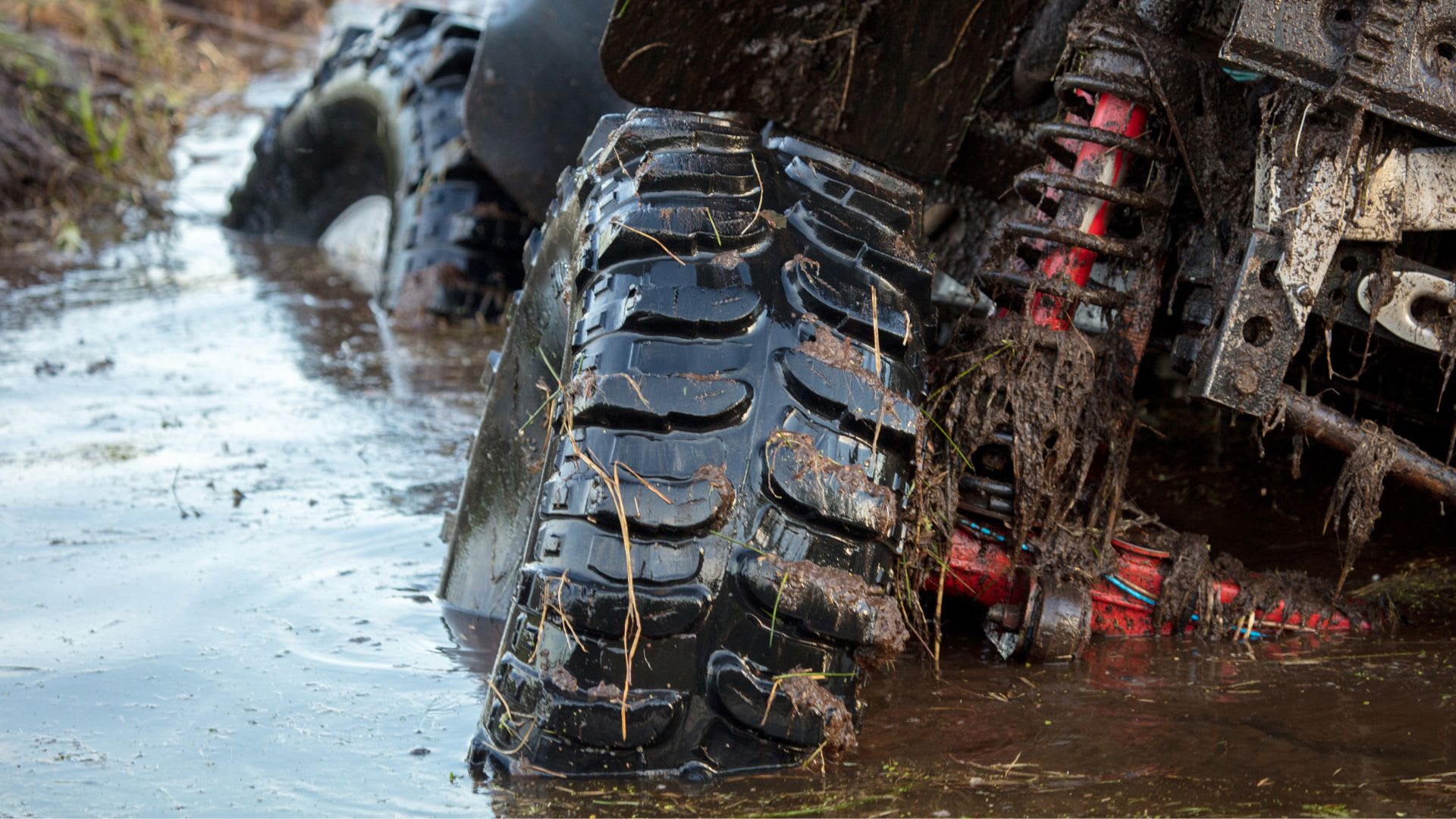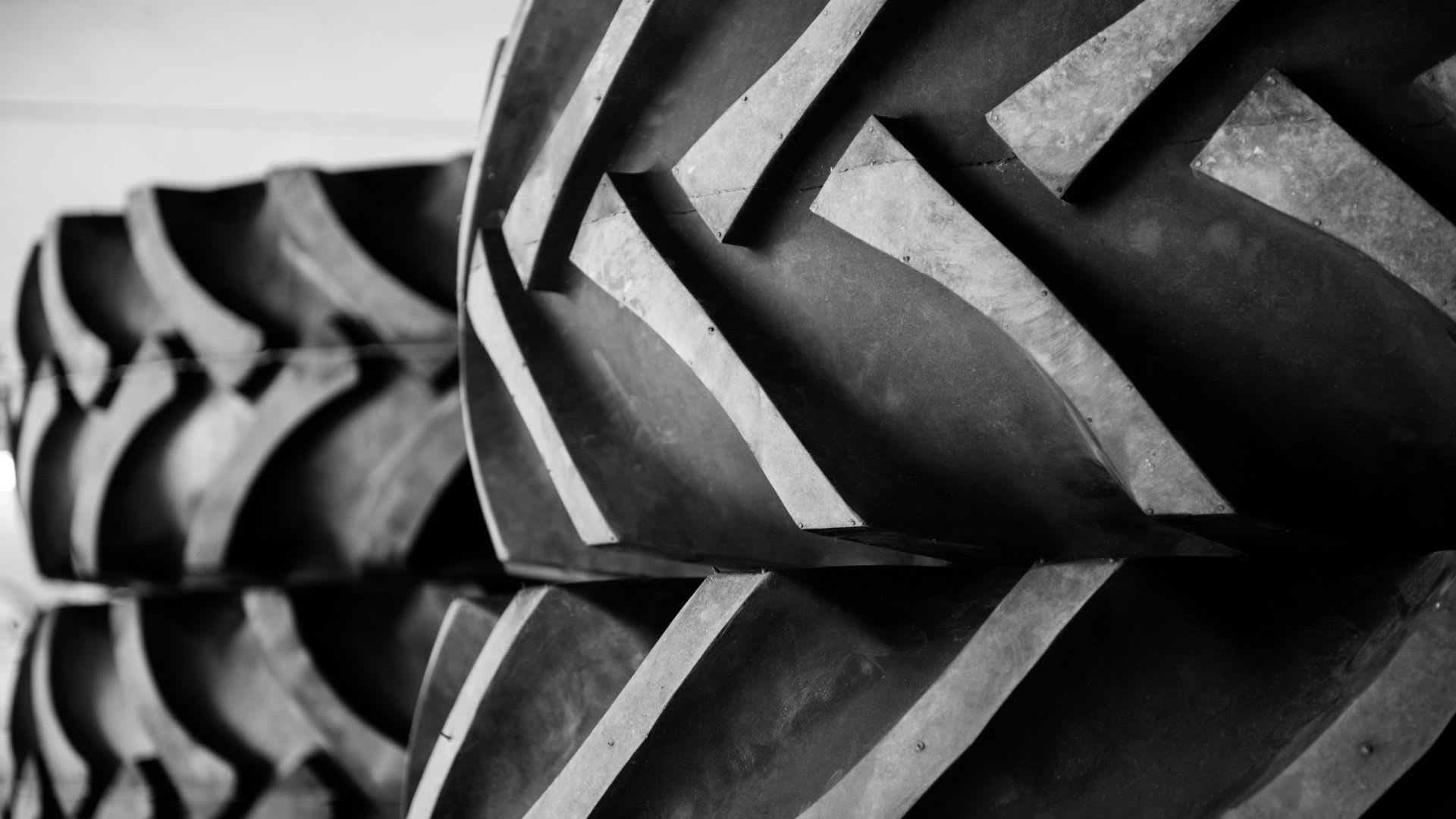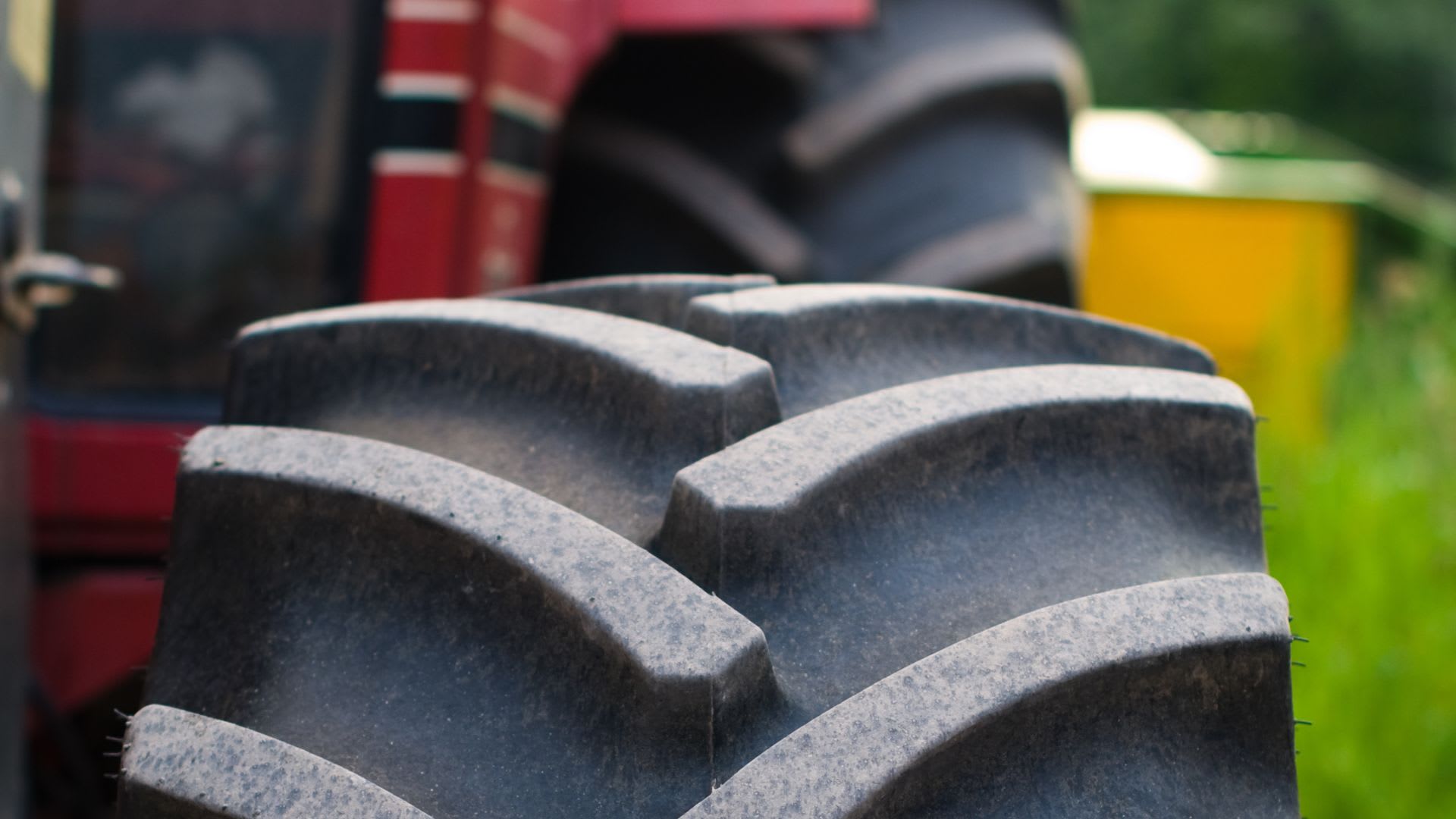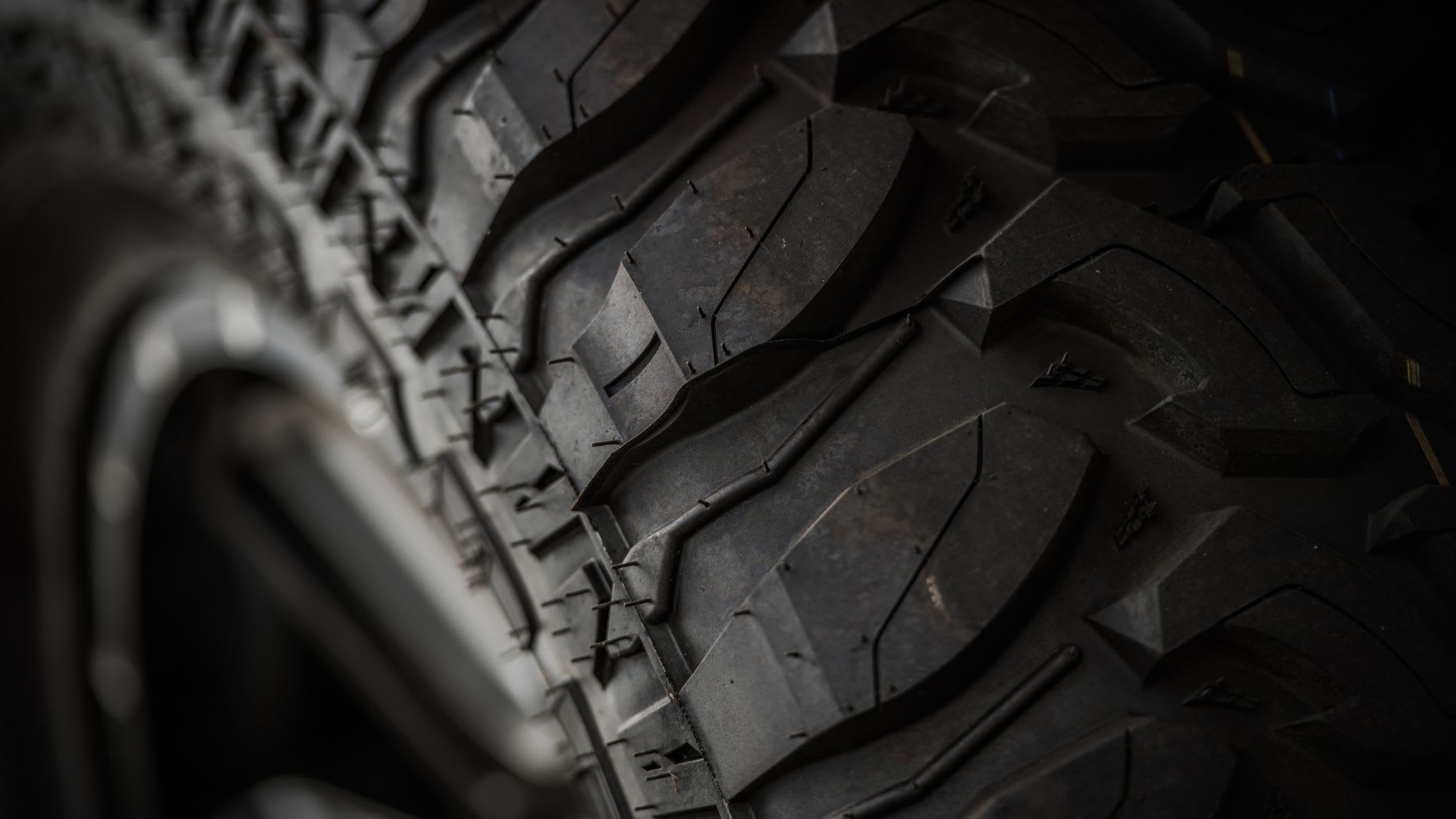Tire Maintenance & Safety
Free shipping
Best price guarantee
Special pricing
Financing with Resolve
Easy returns

Tire tread patterns play a crucial role in vehicle performance, with different designs serving specific purposes across various driving conditions. Among these specialized patterns, lug tread stands out as a distinctive design that has been essential to agricultural, construction, and off-road applications for decades.
The term "lug tread" shares its name with a popular Canadian craft beer, but in the automotive world, it represents something entirely different. This aggressive tread pattern features deep, chunky blocks separated by wide grooves, creating a design that excels where standard highway tires would struggle.
Understanding lug tread design helps drivers make informed decisions about their tire needs. Whether you operate farm equipment, drive construction vehicles, or simply want to explore off-road terrain, knowing how lug tread works can mean the difference between getting stuck and maintaining traction in challenging conditions.
What is Lug Tread?

Definition and Basic Features
Lug tread refers to a specialized tire design characterized by large, raised tread blocks — called lugs — that protrude significantly from the tire's surface. These chunky blocks create an aggressive pattern specifically engineered for maximum traction in loose, soft, or uneven terrain. Unlike the continuous ribs found on highway tires, lug treads feature distinct, separated blocks with deep voids between them.
The defining characteristics of lug tread include:
- Deep tread blocks: Typically measuring 20-30mm or more in depth, providing substantial bite into soft surfaces
- Wide grooves: Spacious channels between lugs that allow for material displacement and self-cleaning
- Aggressive angles: Lugs positioned at specific angles to maximize forward thrust and lateral stability
- Reinforced construction: Heavy-duty rubber compounds and steel belts designed to withstand harsh conditions
These tires commonly appear on agricultural tractors, construction equipment like the Advance Industrial Lug SST, and specialized off-road vehicles. The Power King Industrial Lug represents a prime example of this design philosophy: built tough for demanding applications where standard tires would fail.
How Lug Tread Differs from Regular Tire Patterns
The contrast between lug tread and conventional tire patterns becomes immediately apparent when examining their construction. Highway tires feature shallow tread depths — typically 8-10mm when new — with closely spaced ribs and sipes designed for maximum road contact. These patterns prioritize quiet operation, fuel efficiency, and stable handling on paved surfaces.
Lug tread takes the opposite approach: sacrificing on-road refinement for off-road capability. Where highway tires use intricate siping and continuous contact patches, lug treads employ:
- Discontinuous contact: Individual lugs make intermittent ground contact, creating a "paddle wheel" effect
- Variable void ratios: Up to 40-50% open space between tread blocks versus 20-30% on highway tires
- Directional patterns: Many lug designs feature chevron or bar patterns optimized for forward traction
This fundamental difference in design philosophy means lug tread tires generate more noise on pavement — a rhythmic thumping as each lug contacts the road. They also create more rolling resistance, reducing fuel economy by 10-15% compared to highway tires. However, these trade-offs enable superior performance in conditions where conventional tires would simply spin helplessly: muddy fields, loose gravel, sandy terrain, and steep hillsides where mechanical grip becomes essential.
Types of Vehicles That Use Lug Tread

Agricultural and Farm Equipment
In the agricultural world, lug tread tires prove essential for tractors and farm machinery. They deliver unparalleled traction across fields, making it easier to maneuver heavy equipment without slipping. By offering a firm grip, these tires ensure that operations continue smoothly, even when the ground becomes challenging to navigate.
Additionally, the self-cleaning design of lug tread tires keeps them clear of mud and debris. As tractors traverse fields, the wide gaps between the lugs help eject soil, maintaining consistent performance. This feature is crucial during wet seasons, allowing farm operations to proceed without interruption and ensuring that equipment can work efficiently in all conditions.
Construction and Industrial Applications
For construction and industrial purposes, lug tread tires provide the stability and resilience needed on rugged job sites. These tires are specially designed for heavy machinery such as loaders and backhoes, offering reliable traction on uneven surfaces like gravel and dirt. The robust build of these tires supports the demands of heavy equipment, ensuring they can handle significant weights without compromising performance.
The durability of lug tread tires makes them ideal for construction environments, where they frequently encounter rough terrains and heavy loads. This toughness helps extend tire life, reducing the need for frequent replacements and minimizing downtime. Moreover, their ability to maintain traction on loose surfaces enhances safety and operational efficiency, allowing machinery to perform its tasks without the risk of getting bogged down or losing control.
How Does Lug Tread Work?

Traction Mechanics
Lug tread tires excel in challenging terrains due to their innovative design. The deep grooves are engineered to penetrate soft surfaces, providing substantial grip in environments where conventional tires struggle. This feature is particularly advantageous in muddy or sandy areas, where traction is crucial for movement.
The intentional spacing between the lugs plays a critical role in the tire's functionality. It allows loose material like dirt and rocks to be efficiently expelled, preventing obstruction and maintaining clean contact with the ground. The angled lugs enhance propulsion by optimizing the tire's interaction with the terrain, securing steady forward movement. This design creates a mechanical bond with the surface, delivering stability and control essential for safe operation.
Self-Cleaning Properties
The self-cleaning ability of lug tread tires is a standout feature, ensuring optimal performance across varying conditions. The generous voids between the lugs facilitate effective removal of accumulated debris, which is essential for retaining the tire's traction capabilities. As the tire rotates, centrifugal force aids in dislodging packed material, thus preserving the effectiveness of the tread pattern.
These self-cleaning properties enable the tires to adapt seamlessly to diverse environments, maintaining their grip and reliability even as conditions shift. By preventing the accumulation of obstructive material, lug tread tires deliver consistent performance, allowing vehicles to operate efficiently without frequent interruptions for maintenance. This adaptability is crucial for vehicles navigating unpredictable terrains, ensuring dependable performance.
Benefits of Lug Tread Design
Superior Off-Road Performance
Lug tread tires excel in navigating through diverse terrains, offering remarkable grip on challenging surfaces like loose gravel, deep mud, and snow-covered paths. This design ensures that vehicles can traverse these environments with confidence, reducing the likelihood of getting bogged down. With their ability to maintain traction in variable conditions, these tires support smooth and efficient movement across difficult landscapes.
These tires also provide significant advantages on steep terrains. Their ability to grip uneven surfaces ensures that vehicles can ascend inclines with greater assurance, enhancing overall stability and control. This reliability in traction means that drivers can approach and overcome obstacles with precision, making lug tread tires indispensable for tackling rugged or unpredictable environments safely.
Durability and Longevity
The robust design of lug tread tires ensures they endure the toughest conditions, offering exceptional resilience against wear from frequent use. The substantial rubber used in the tread design acts as a buffer, effectively absorbing impacts from rugged surfaces and debris. This construction is purposefully crafted to withstand the continuous pressures of off-road terrain, extending the tire's lifespan significantly.
These tires are engineered to support heavy loads, making them ideal for vehicles tasked with carrying substantial weights. Alongside their ability to resist wear, this durability translates into a longer service life, which is crucial for those who rely on their vehicles for demanding tasks. By providing enduring performance, lug tread tires represent a reliable option for sustained use in challenging applications.
Limitations and Considerations
On-Road Performance Trade-offs
While lug tread tires excel in off-road environments, they present specific limitations on paved roads. The design that provides superior traction on uneven terrains can result in increased noise levels on smooth surfaces, often manifesting as a noticeable hum. This auditory impact can become prominent during extended drives, potentially affecting the comfort of the journey.
The structure of lug tread tires inherently leads to higher energy demands from the vehicle. The depth and spacing of the tread contribute to increased drag, requiring more power to maintain speed. Consequently, this can result in a reduction of fuel efficiency, making these tires less suitable for long highway commutes where conserving fuel is a priority. Furthermore, their rugged design can lead to accelerated wear when frequently used on asphalt, necessitating more frequent evaluation and potential replacement.
Comfort considerations also arise with lug tread tires in regular road use. Their robust construction may not offer the same level of shock absorption, leading to a firmer ride. This characteristic can cause a more noticeable transmission of road irregularities into the cabin, which might be less desirable for everyday driving on city streets.
Weather and Surface Restrictions
Lug tread tires are not universally adaptable to all surfaces and weather conditions. On highways, particularly at higher speeds, they may not deliver the optimal stability and smoothness expected from standard tires. This makes them more appropriate for specialized applications rather than for general road travel.
Additionally, their aggressive pattern can impact softer terrains like residential lawns, potentially causing visible tracks or surface disruption. This aspect requires careful planning of tire use, especially in environments where maintaining the integrity of the surface is crucial.
Weather considerations are also significant with these tires. While excellent in mud or loose terrain, they may not perform adequately on icy roads without the addition of traction-enhancing features like studs. This limitation may necessitate swapping to winter-specific tires in colder climates, ensuring safe driving conditions during extreme weather.
Choosing the Right Lug Tread Pattern
Assessing Your Needs
Choosing the right lug tread pattern begins with an understanding of your vehicle's typical operating conditions. Determine the types of surfaces your vehicle will most frequently encounter. If your routes often include loose soil or sand, selecting a pattern that excels in these conditions will enhance your vehicle's efficiency. Conversely, if your driving takes you through varied environments, a versatile tread pattern can offer the best balance.
Consider the proportion of time spent on highways versus rugged terrains. Vehicles that navigate both paved and unpaved roads benefit from tread designs that maintain performance across different surfaces. Additionally, the load your vehicle carries regularly factors into your decision. Tires engineered to support heavier weights ensure stability and durability over time.
Balancing the need for traction with the comfort of the ride is also essential. While grip and control are crucial for safety, ensuring a smooth and comfortable ride enhances overall driving satisfaction. Selecting a tread pattern that delivers both can significantly improve your driving experience.
Lug Pattern Variations
Different lug tread designs serve distinct purposes, each tailored to optimize performance in specific conditions. Bar lugs have a straightforward design that excels in deep, soft terrains like mud, offering the necessary traction to keep vehicles moving without bogging down. This pattern is particularly effective in conditions where maintaining forward momentum is crucial.
V-pattern lugs focus on self-cleaning efficiency. With their angled grooves, they actively shed debris and prevent build-up, maintaining consistent traction and performance across changing surfaces. This design is especially beneficial when moving from one type of terrain to another where debris might otherwise accumulate.
For those encountering a variety of terrains, multi-angle lugs offer a solution. Their design incorporates multiple angles within the tread, providing reliable performance on diverse surfaces, from rocky paths to sandy stretches. This adaptability makes them a popular choice for drivers facing diverse driving conditions.
Hybrid patterns combine elements of both highway and off-road designs, offering a seamless transition between different driving environments. They provide the quiet and stable performance needed for paved roads while retaining the aggressive features necessary for effective off-road traction. These patterns are ideal for drivers who require a tire that can handle a wide range of conditions without compromising performance.
Maintenance Tips for Lug Tread Tires
Regular inspections ensure that lug tread tires continue to perform optimally in demanding conditions. Start by examining the tire surface for any signs of damage, including cuts or abrasions between the lugs, which could weaken the tire's structure. Consistently checking tread depth across the tire is vital for spotting uneven wear, which may suggest issues with alignment or suspension that could impact vehicle handling.
During these inspections, pay close attention to the condition of the sidewalls. Look for signs of damage such as cracks or bulges, which might occur from impacts or carrying heavy loads, as they can compromise the tire's reliability. Addressing these concerns promptly helps prevent unexpected failures and maintain vehicle safety on varied terrains.
In addition to inspections, adopting proper care practices is crucial for extending the life of lug tread tires. After traversing off-road routes, ensure to clear out any debris lodged in the tire grooves, as this can harden and affect performance. Keeping the tire pressure at the recommended levels is essential for optimal performance and even tread wear.
Rotating the tires according to the vehicle manufacturer's instructions promotes balanced wear, thereby extending the tires' lifespan. When not in use, particularly during off-seasons, store the tires in a dry, cool environment away from direct sunlight and chemicals. This practice preserves the tires' condition, ensuring they remain ready for reliable use when needed again.
Understanding lug tread design empowers you to make informed decisions about your vehicle's tire needs, whether you're operating farm equipment, managing construction sites, or exploring off-road terrain. The right tire pattern can dramatically improve your vehicle's performance, safety, and efficiency in challenging conditions. When you're ready to explore tire options that match your specific requirements, we invite you to shop for tires online and find the best deals where our extensive selection helps you find the perfect fit for your driving needs.
Ready to find the perfect tires?
Search By